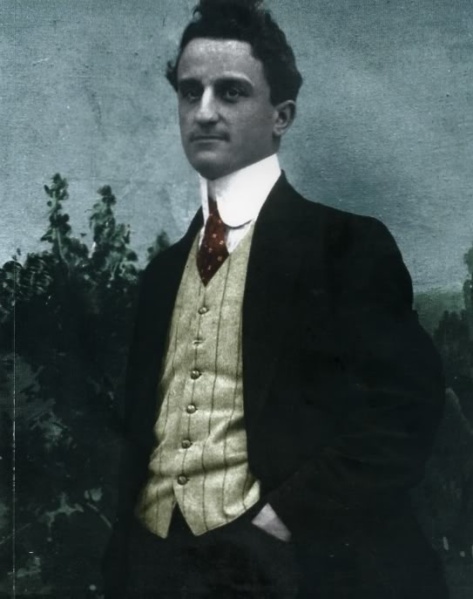Passing of the Oklahoma Outlaws (Fragments)
R: William Tilghman. K: Benny Kent. D: Arkansas Tom, Bud Ledbetter, Chris Madsen, E.D. Nix, William Tilghman. P: Eagle Film Company. USA 1915
“William Matthew Tilghman served as a lawman for 35 years. In his career he rode with the Earps, was a lawman in Dodge City, Kansas, and battled the Dalton gang and the Wild Bunch. In the early 1900s he became fed up with the way Hollywood glamorized the outlaws of the west and, along with his friends E.D. Nix and Chris Madsen, set out to make a movie of how it really was back then. They starred in the film, Passing of the Oklahoma Outlaws (1915), as themselves and arranged to have a member of the Dalton gang named Arkansas Tom released from prison to act as a technical consultant. They met with some difficulty in getting the film shown–theater owners didn’t want to show it because there were no name actors in it. Hollywood told them to put Tom Mix in it if they wanted it to sell, but Tilghman refused. (…)”
IMDb Mini Biography
“Passing of the Oklahoma Outlaws, subtitled ‘Picturization of Early Days in Oklahoma’, is a 1915 American silent western film produced by the Eagle Film Company depicting the end of the outlaw gangs which operated freely during the closing days of the Twin Territories (Indian Territory and Oklahoma Territory). (…) Tilghman organized the Eagle Film Company in response to several movies which glamorized outlaws and depicted lawmen as fools. He intended to produce a movie that gave a realistic portrayal of outlaws and lawmen. Passing of the Oklahoma Outlaws, while consisting of many actual events, contains several fictional people and scenes. One of the more famous fictional characters shown is Rose Dunn, the Rose of the Cimarron.”
Revolvy
“Al Jennings was an attorney, turned train robber, turned politician from Oklahoma. In September 1913, his highly-embellished auto-biography, co-authored by Will Irwin, was published in the Saturday Evening Post as a five part series entitled Beating Back.
He told the exploits of a successful and prosperous group of outlaws that bore little resemblance to anything involving his gang. The same year, Thanhouser Studios, in New Rochelle, N.Y. made Jennings an offer to turn his exaggerated memoirs into a motion picture, starring him.
The movie was shot in 1913, but not released until months later, just in time for Jennings’ unsuccessful run for the governor’s seat. Members of the Jennings gang were depicted as brave and daring men, who were forced by circumstances into lives outside the law. While the U.S. deputy marshals who pursued them were lampooned and portrayed as clownish for comedic affect. Jennings toured with the movie as it premiered across the country. (…)
Not to be outdone, retired U.S. Marshal E.D. Nix, and retired deputies, Chris Madsen and Bill Tilghman made plans to produce their own “historically accurate” movie. In December 1914, the Eagle Film Company was established with Nix as president, Tilghman as vice-president and Madsen as secretary. At first, the lawmen wanted to present their version of events with the Jennings gang, but realized that they needed more material. The true adventures of these legendary lawmen required no embellishment; yet, that didn’t stop them. By the time the script was finished, it turned out that they had been responsible for the apprehension of every infamous outlaw associated with Oklahoma and Indian Territory. Tilghman mainly, took credit for the good work of many other U.S. deputy marshals and local lawmen.
In their movie, The Passing of the Oklahoma Outlaws, the retired lawmen re-enacted their heroic exploits as they tamed the Oklahoma frontier. There were attempts to maintain a certain level of historic accuracy. Many of the scenes in the movie were shot where they occurred, and featured some of the actual lawmen and outlaws who participated in the events. Roy Daugherty, a.k.a. Arkansas Tom Jones, had been released from prison five years earlier and was enthusiastic about repeating his role in the Ingalls battle, between lawmen and the Doolin gang, for the movie. (…)”
David Farris
Edmond Life & Leisure
>>> Tilghman’s film about (and with) Al Jennings: The Bank Robbery
